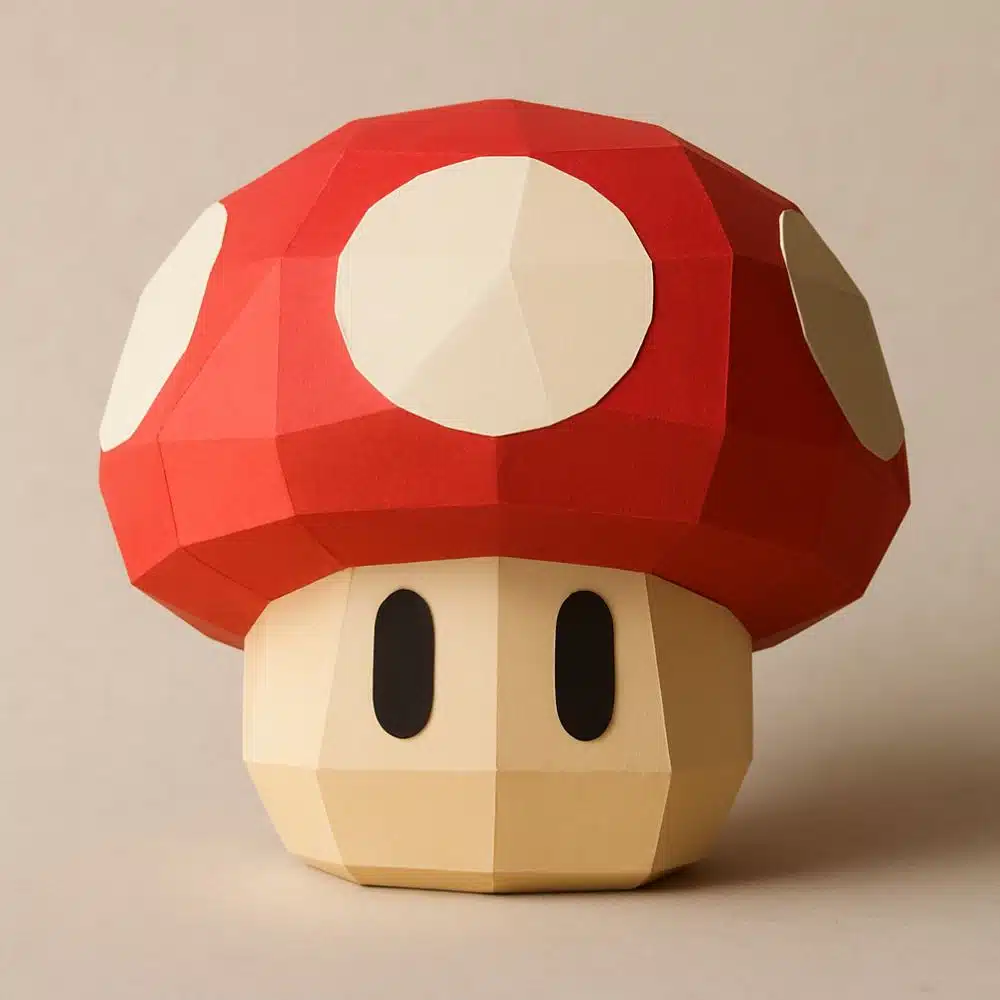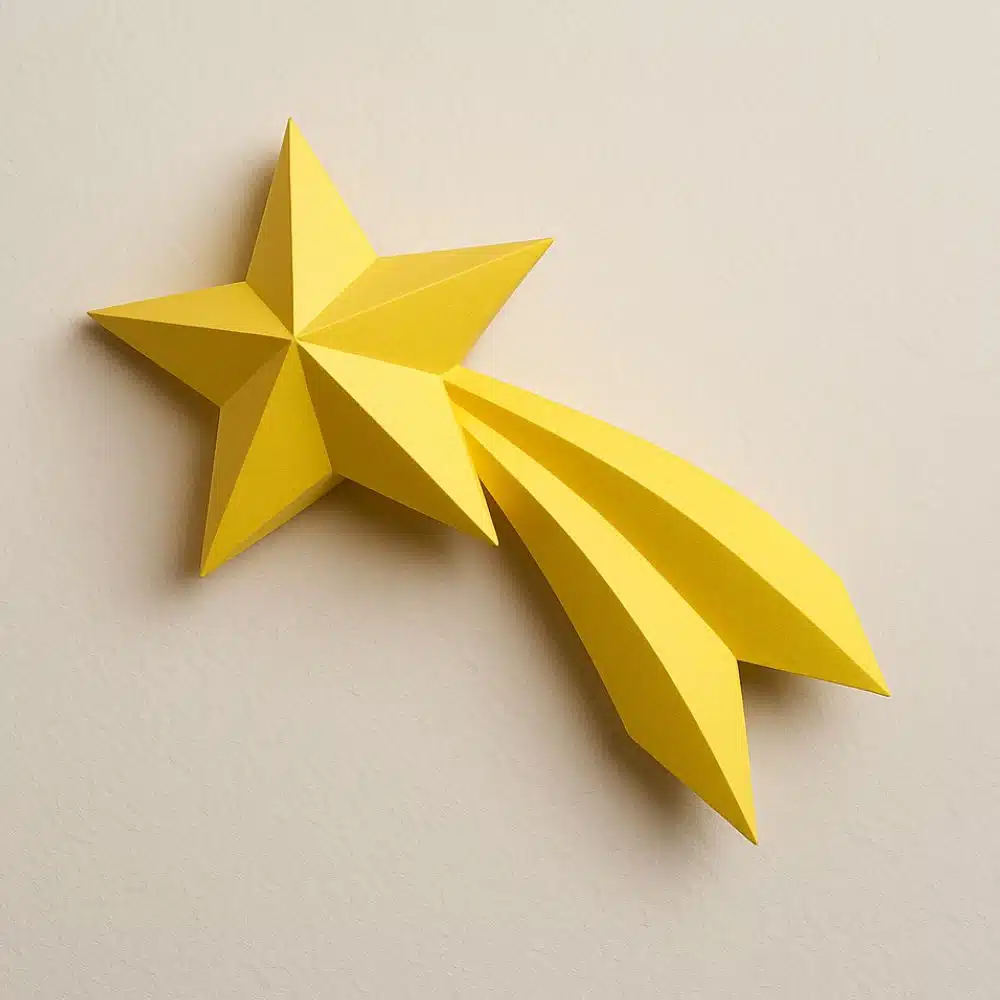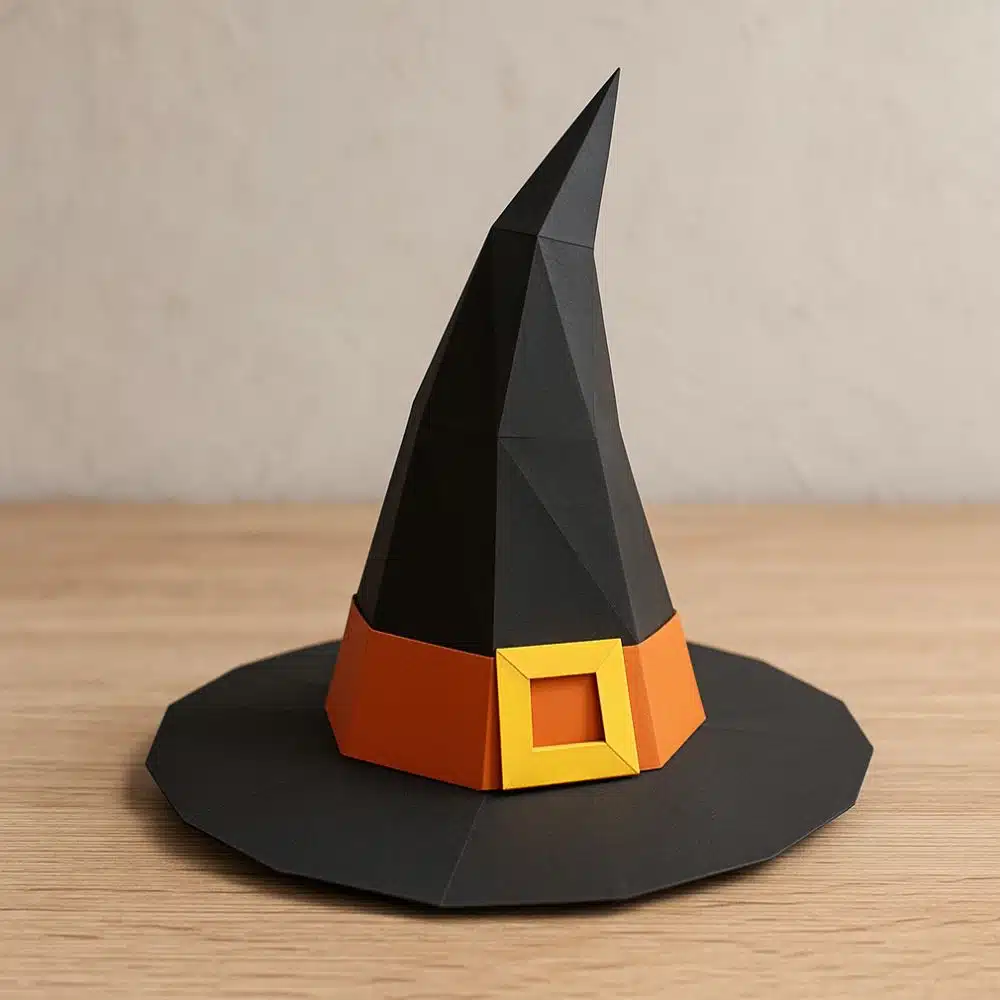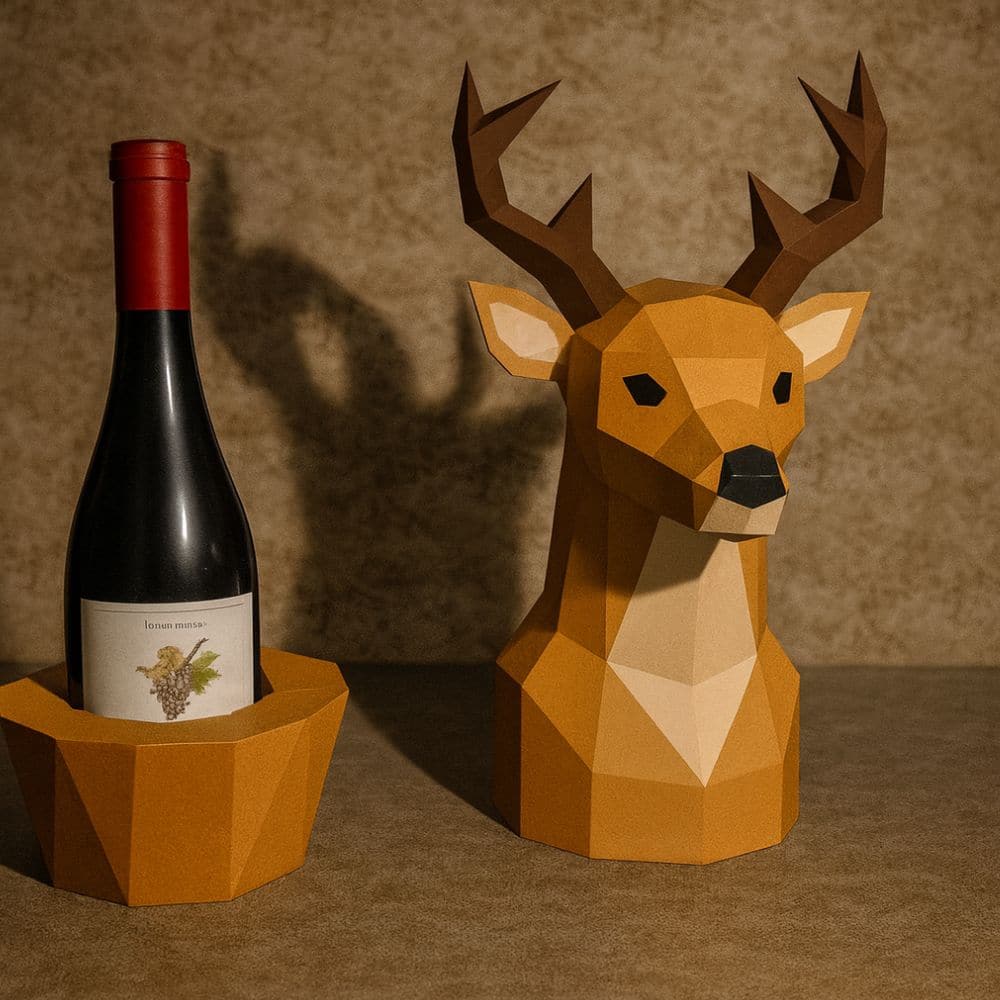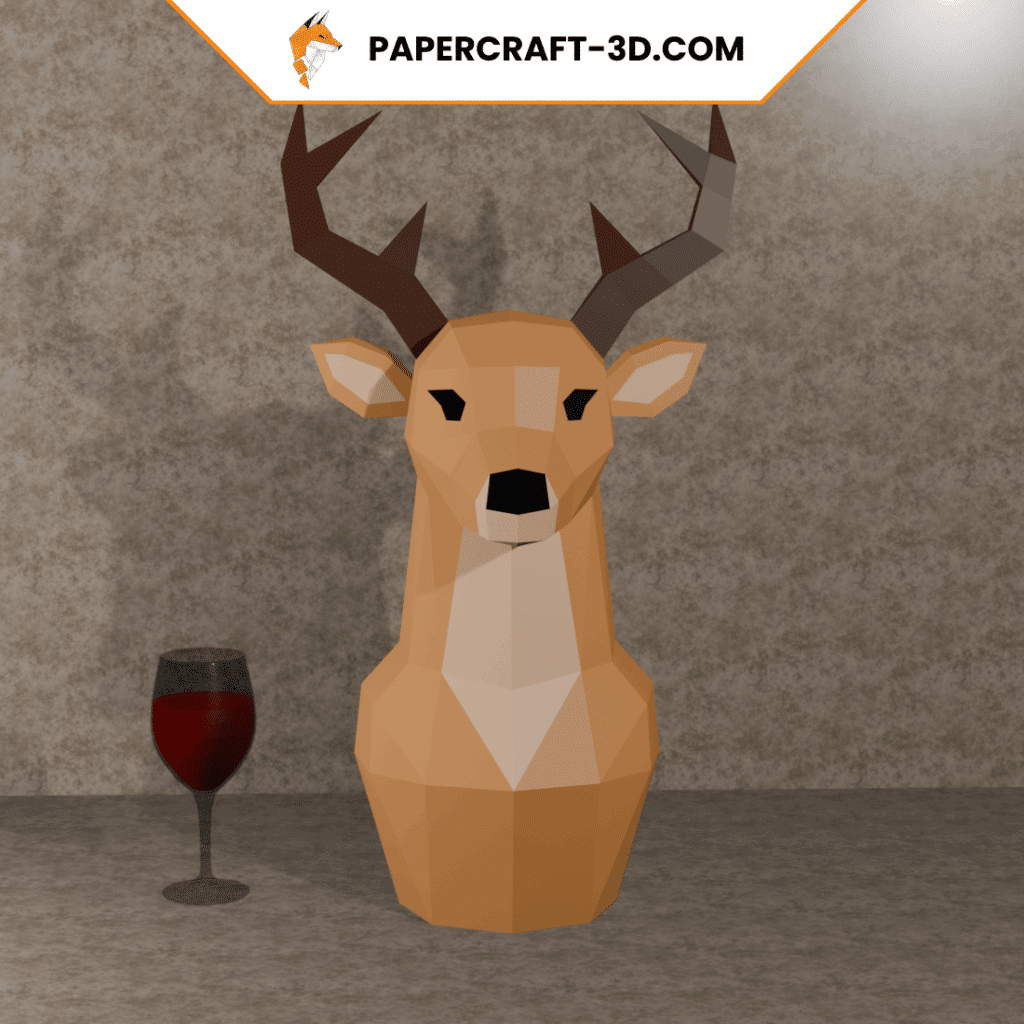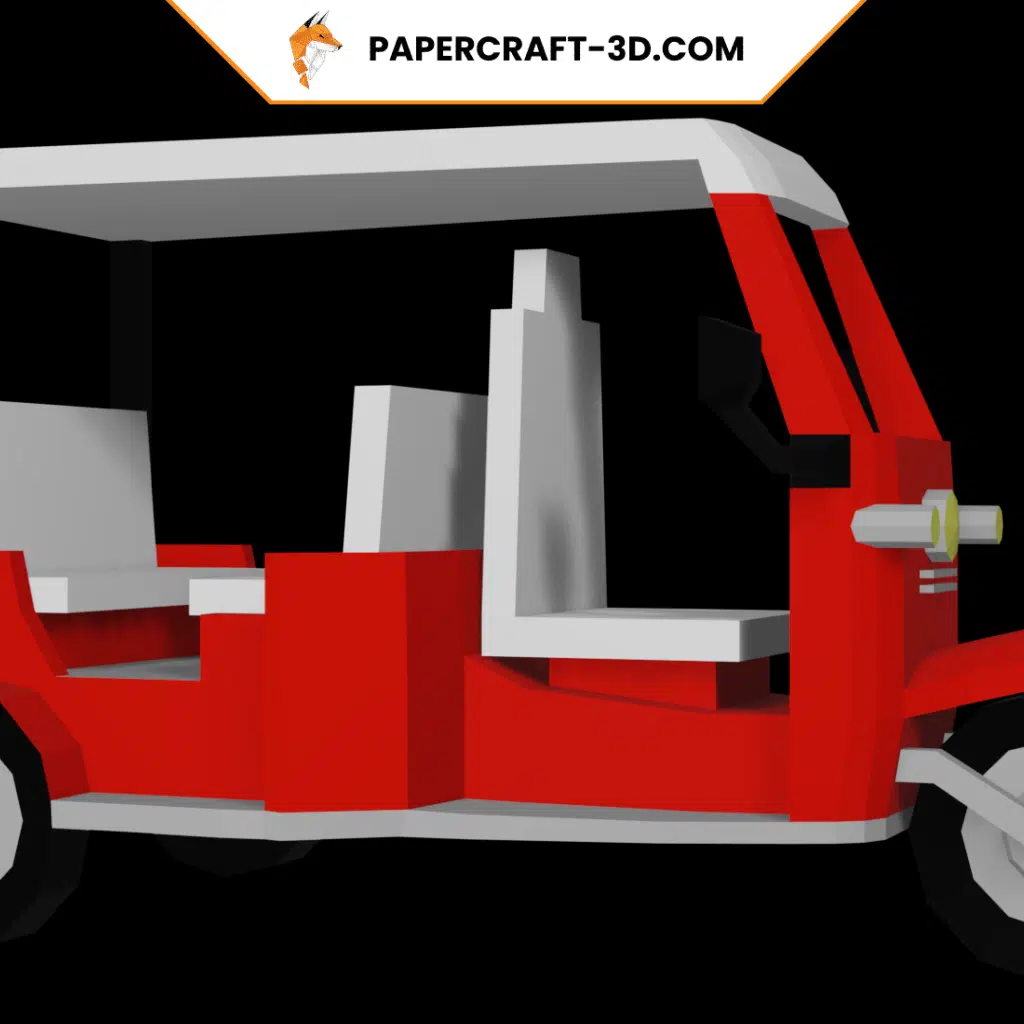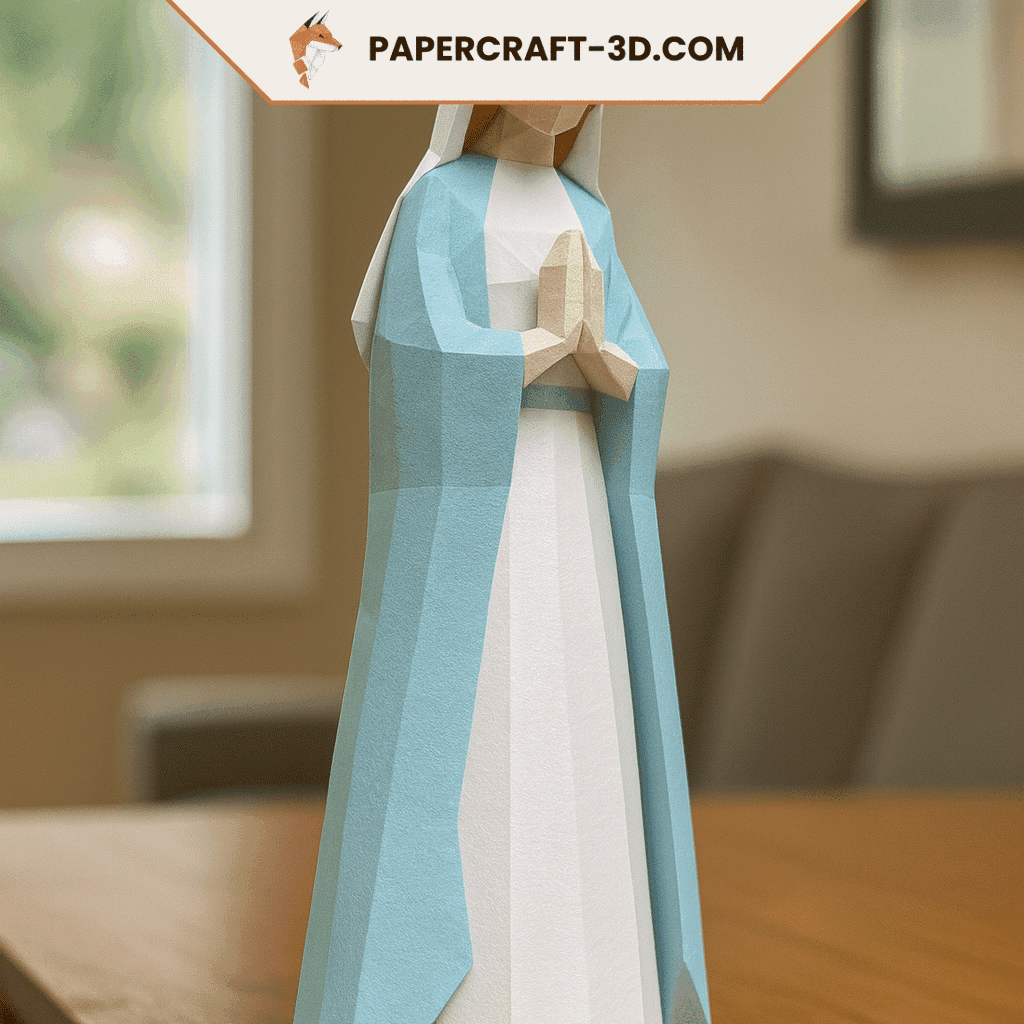Kirigami is a fascinating art that combines paper folding and cutting to create elegant, three-dimensional patterns. This Japanese art has its roots in ancestral Chinese paper-cutting techniques (jianzhi) and has been enriched by origami over time. The term itself comes from the Japanese words “kiri” (to cut) and “gami/kami” (paper). So, unlike pure origami, kirigami doesn’t forbid the use of scissors: the sheet of paper can be both folded and cut to create sophisticated shapes. By cutting out symmetrical shapes from a folded sheet and unfolding, you can produce magnificent creations such as paper snowflakes, flowers or even pop-up greetings cards. It’s an accessible creative hobby that stimulates precision and patience.
Origins and history of kirigami
The origins of kirigami go back to ancient China (4th century), where the delicate cutting of paper was practised in the art of jianzhi. It wasn’t until Japan that the technique really evolved, incorporating the folds of origami. As artist Ghylenn Descamps explains, “kirigami has its roots in the oldest Chinese paper-cutting technique, jianzhi”, and it was in Japan, by combining this cutting with folding techniques, that kirigami as we know it today was born.
In medieval Japan, paper cut-outs were used for religious ceremonies and in Shinto shrines (e.g. the famous paper “purification arrows”). Subsequently, kirigami was mainly confined to artistic and educational uses (children’s cut-paper snowflakes spring to mind). Today, although less widespread than origami, kirigami has gained worldwide popularity thanks to its spectacular visual appeal. It can be found in creative decorations (paper garlands, illuminations), relief maps and even paper architecture (miniature monuments). Its recent popularity is due to its creative flexibility: you can create very simple projects (stars, hearts, snowflakes) or complex, animated 3D sculptures, suitable for all levels.
Kirigami vs Origami: key differences
The fundamental point is that in origami, paper is folded without ever being cut, whereas in kirigami, paper cutters or scissors can be used. This simple difference opens up a wider creative field. With kirigami, you can quickly create reliefs and openings that are impossible with classic origami, and transform a simple plane into a sculpture. For example, paper flakes (winter symbols) or pop-up panoramas are typical of kirigami, as they require cutting to open. A paper craft guide notes that “kirigami combines folding and cutting to create intricate and beautiful patterns”, adding that this hobby blends the magic of folding and cutting to sublimate an ordinary sheet of paper.
Kirigami techniques and materials
Several basic techniques are used in kirigami, often inspired by origami folds: valley folds, mountain folds, parallel folds and so on. A very common principle is symmetry: the sheet is folded in half or in several parts before cutting out a motif, so that it repeats itself in a regular way (this is the case of traditional snowflakes, for example). You can also cut more freely after folding, for asymmetrical or highly detailed patterns.
In practice, all you need is a sheet of paper (origami paper, printer paper, drawing paper or strong paper, depending on the desired rigidity) and a good cutter or precision pointed scissors. A simple, sharp hobby knife and a ruler may be all you need to get started. Some designers also use a folder (a tool for marking folds) to obtain clean edges. The choice of paper is crucial: the finer and more resistant it is, the more fine cuts can be made without tearing. Special papers (such as slightly resistant Japanese washi) or colored paper provide a beautiful finish.
- Paper type: fine origami paper, drawing paper (light cardboard), washi. Thin paper facilitates precise folding and cutting.
- Tools: precision cutter or scalpel, fine-tipped scissors, ruler, folding knife or back of blade to mark folds.
- Other supplies: pencil for drawing patterns, eraser, glue (for optional assemblies).
Ideas for kirigami projects: snowflakes, pop-up cards, sculptures
Kirigami offers a wide range of possible projects. The most classic include cut-paper snowflakes, made by successive folds and symmetrical cuts. These snowflakes are reminiscent of nature and decorate windows nicely in winter【52†】. Pop-up cards are another popular use: the center of a card is cut and folded so that an object (flower, heart, character) unfolds when the card is opened. This technique is commonly used for personalized greeting cards and invitations, adding a surprising three-dimensional dimension.
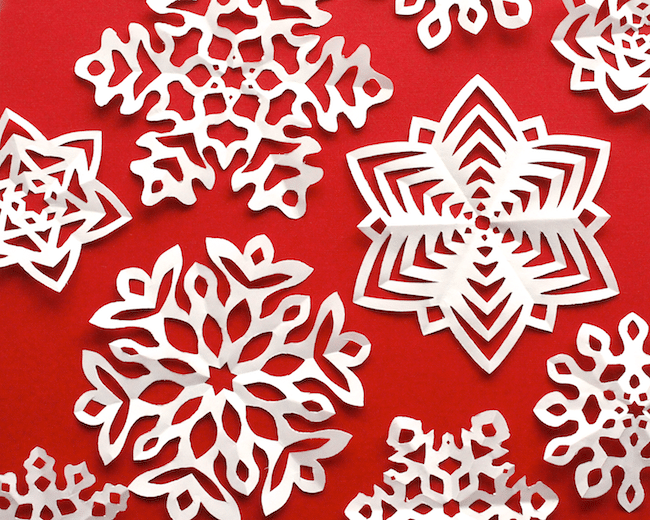
Floral motifs are also very popular in kirigami – for example, several petals can be cut out and opened like real flowers in relief. Artists use this method to create magnificent permanent paper bouquets. Others create real kirigami landscapes, like small, detailed villages or buildings. For example, the TokyoTreat blog highlights “architectural kirigami”: miniature cut-outs of buildings, bridges or monuments, which highlight the precision required (see next image).
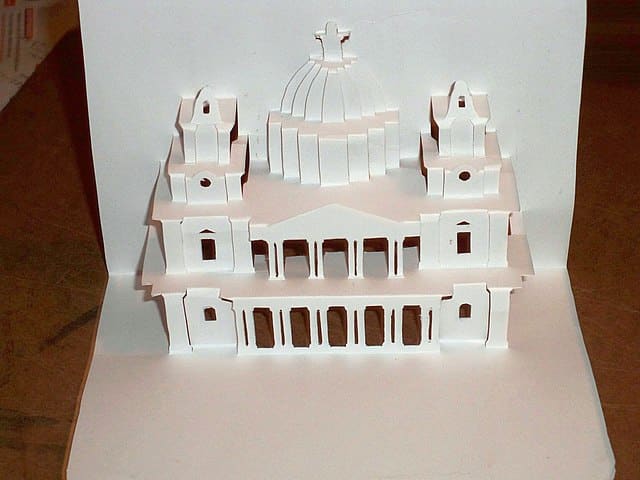
Paper-cut garlands, fir trees and hanging stars are all available for holiday and interior decoration. Christmas kirigami involves cutting out winter scenes or stylized fir trees to create unique wall decorations. A typical example is to make several 3D fir trees of different sizes, to be assembled as table centerpieces or mobiles. The image below shows a set of small forests of white paper fir trees, a simple yet elegant motif that illustrates the decorative potential of kirigami【54†】.
The benefits and creativity of kirigami
Kirigami is not just a creative pastime: it can also be a meditative activity. As Ghylenn Descamps points out, the art “requires time, precision and concentration”, and provides a real return to the present moment – a kind of “active meditation”. By practicing kirigami, you exercise your fine motor skills and creativity, while at the same time relaxing. Handmade paper decorations, such as original cards or hanging baskets, bring a warm, personal touch to the home, far removed from standardized manufactured objects.
What’s more, kirigami is for everyone: children and adults alike. For youngsters, creating a simple flake or pop-up card is very accessible and encourages concentration. More advanced projects, including repetitive motifs or complex sculptures, are suitable for more experienced craftspeople. In all cases, kirigami develops patience, rigor and imagination. It can also be practised in group workshops (schools, creative hobbies), encouraging the transmission of techniques and conviviality. As a number of educational sources have noted, this art allows you to “let go of your creative spirit” and discover countless shape possibilities with each cut and fold.
Kirigami and technological innovations
More than just a hobby, kirigami inspires modern technological innovation. Materials and engineering researchers are using kirigami to create stretchable structures and foldable objects. Indeed, research in PNAS points out that kirigami can be transformed from a flat sheet to a 3D shape simply by cutting and folding. For example, engineers have designed flexible membranes based on silicon or polymers which, when cut into specific patterns and relaxed, take on a useful three-dimensional shape (for electronics or medical sensors). Others have developed batteries in the shape of stretchable kirigami chains, ideal for wearables. This work demonstrates that kirigami-inspired “cuts” can impart elasticity and controlled deformation to otherwise rigid materials.
In this way, kirigami is sometimes described as a bridge between art and science: it serves as a model for the design of metamaterials, energy absorption systems and soft robotics. Of course, these advanced applications are a far cry from the basic paper: they’re known as “elastic kirigami” or “kirigami actuation” in engineering. But it illustrates that traditional Japanese art is crossing over into the present century with unexpected influence: from simple paper flakes to futuristic mechanism prototypes, a whole world of possibilities is opening up thanks to this revisited thousand-year-old technique.
Getting started with kirigami: tutorials and resources
There are many tutorials available for learning kirigami. You can start with online videos or step-by-step guides. For example, a simple video tutorial combines folding and cutting by following a basic figure (such as a geometric pattern). The illustration below is an example of a video tutorial for beginners:

In addition to videos, there are printable models (“templates”) and dedicated books. Creative workshops or hobby classes can also introduce you to kirigami (in libraries, museums or cultural centers, particularly in Japan). Enthusiasts exchange ideas on forums and social networks (Instagram, Pinterest, Facebook groups), where they can find free templates and advice. Stationery and craft stores often sell special colored papers and beginner kits.
Conclusion: give creativity free rein
Kirigami is a versatile paper art that combines sobriety and complexity: a simple piece of paper can be used to create a multitude of decorative and expressive objects. From its traditional Japanese origins to its modern use, it continues to amaze young and old alike. This hobby is both technical and fun: it requires rigor in cutting, creativity in drawing the motif, and the satisfaction of seeing creations take shape under your fingers. Thanks to the Internet and the many tutorials available, it’s now easier than ever to get started.
Why not try it yourself? Grab a sheet of paper, follow a tutorial and set off on a creative decoupage adventure. Whether you’re making an original card, decorating a party or simply enjoying a moment of relaxation, kirigami brings a unique artistic touch to all your paper projects. Let your imagination guide the scissors and discover for yourself why this ancestral art still holds such fascination.






